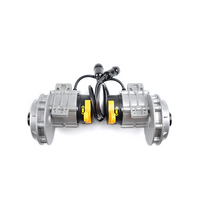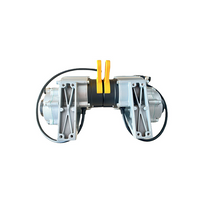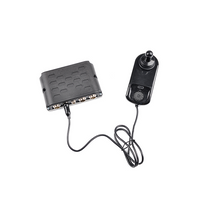- Home
-
- TF Integrated Workstation
- TT Integrated Station
- TS Single-Person Station
- TO Single-Person Station
- Advanced Office Table
- Manager Table
- Odette Conference Table
- Lifting White Board
- Lifting Podium
- Working Port
- Zen Standing Desk
- Lifting Coffee Table
- Home Standing Desk
- Nature Standing Desk
- Invictus Gaming Desk
- Study Desk
-
-
- Electric Hospital Bed
- Image Equipment
- Examination Bed/Clinic Bed
- Operation Table and Chair
- Infant Incubator
- Independent Weighing System
- Home Care Bed
- Patient Lift
- Wheelchair
- Toilet Lift
- Bath Lift
- Shower Trolley
- Smart Rollator Walker
- Ophthalmic Workstation
- Treatment Chair
- Facial Chair
- Traction Table
- Massage Chair
- OT Training Equipment
- Stand-up Application
- Rehabilitation Robot
-
-
- Photovoltaic Application
- Photothermal Application
- Energy Storage Container
- Tractor
- Seeder
- Fertilizer Spreader
- Harvester
- Rotary Cultivator
- Climate Control System
- Automatic Feeding System
- Excavator
- High Altitude Work Platform
- Garbage Truck
- Street Sweeper
- AMR Automated Guided Vehicle (AGV) and Autonomous Mobile Robot (AMR)
- Forklift Accessories
- Palletizing Collaborative Robots
- Packaging Machine
-
-
Brushed vs. Brushless Motors: A Comprehensive Comparison
Views: 0 Author: Site Editor Publish Time: 2024-04-08 Origin: Site
Electric motors are the heart of countless devices and machinery, powering everything from household appliances to industrial equipment. Within the realm of electric motors, two primary types stand out: brushed and brushless motors. Both have their strengths and weaknesses, making them suitable for different applications. In this article, we'll delve into the intricacies of brushed versus brushless motors, exploring their differences, advantages, and drawbacks.

Brushed Motors: The Classic Choice
Brushed motors have been around for over a century and have long been the go-to choice for various applications. Their design is relatively simple: a central rotor surrounded by coils (windings) housed within a stationary outer shell (stator). The magic happens when carbon brushes, in contact with a commutator, deliver electrical current to the windings, generating magnetic fields that drive rotational motion.
One of the primary advantages of brushed motors is their simplicity. They are straightforward to manufacture and typically more affordable than brushless motors. Additionally, brushed motors tend to be more forgiving of voltage fluctuations, making them suitable for applications where power sources may not be stable.
However, brushed motors also have their drawbacks. The brushes and commutator experience wear and tear over time, leading to decreased efficiency and performance degradation. This results in a shorter lifespan compared to brushless motors. Furthermore, the brushes themselves can generate friction and heat, leading to energy losses and potentially compromising the motor's reliability in demanding environments.
Brushless Motors: The Modern Solution
Brushless motors represent a significant advancement in motor technology. Instead of relying on physical brushes and a commutator, brushless motors utilize electronic commutation. In a brushless motor, the rotor contains permanent magnets, while the stator consists of multiple sets of windings. By precisely controlling the electrical currents in these windings, often through sophisticated sensor feedback systems, the motor can achieve smooth, precise rotation with minimal energy loss.
One of the key advantages of brushless motors is their higher efficiency. The absence of brushes and commutators reduces friction and wear, resulting in less energy loss and longer lifespan compared to brushed motors. This increased efficiency translates to lower operating costs and improved performance in various applications.
Moreover, brushless motors offer finer control over speed and torque, making them ideal for applications requiring precision and responsiveness. Their electronic commutation allows for smoother operation and eliminates the sparking associated with brushed motors, making them suitable for sensitive environments.
Efficiency and Performance Comparison
When it comes to efficiency and performance, brushless motors often outshine their brushed counterparts. The electronic commutation in brushless motors minimizes energy losses due to friction and heat, resulting in higher overall efficiency. This increased efficiency makes brushless motors particularly attractive for applications where energy consumption is a concern, such as electric vehicles and renewable energy systems.
Furthermore, brushless motors offer superior reliability and longevity compared to brushed motors. The absence of brushes and commutators means fewer moving parts, reducing the risk of mechanical failure and maintenance requirements. This makes brushless motors a preferred choice for applications where downtime must be minimized, such as in industrial automation and aerospace.
However, brushed motors still have their place in certain applications. Their simplicity and robustness make them suitable for tasks where cost-effectiveness and reliability are paramount. Additionally, brushed motors may be preferred in applications where precise control over speed and torque is not critical, such as in household appliances and power tools.
Conclusion: Choosing the Right Motor
In the brushed versus brushless motors debate, there is no one-size-fits-all answer. Both types of motors have their advantages and drawbacks, and the choice between them depends on the specific requirements of the application at hand.
For applications where simplicity, affordability, and tolerance to voltage fluctuations are critical, brushed motors may be the preferred choice. However, for tasks that demand higher efficiency, reliability, and precision control, brushless motors offer distinct advantages.
Ultimately, understanding the differences between brushed and brushless motors is essential for selecting the right motor for any given application. By weighing factors such as efficiency, performance, and cost, engineers and designers can make informed decisions to ensure optimal motor performance and reliability.
QUICK LINKS





















